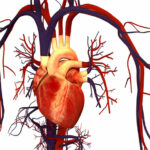Feedback—Your FAQs Answered
I notice that the GI for oatmeal varies. How can I find oatmeal with the lower GI?
The most recent tests using the standardised method in healthy volunteers show that oatmeal porridge made from traditional, old-fashioned or raw rolled oats has a GI of around 58. If you use steel cut oats the GI is even lower, 52. Porridge made from instant, quick or minute oats has a GI of 82. Particle size matters (see December 2006 Food for Thought). The rule of thumb is to select minimally processed oats that still have the husk. They tend to be more yellow-brown in colour. And although they may take a little longer to cook, the flavour is great and the GI is low. You can also use them to make your own muesli or add them to your other recipes and baking to reduce the GI.
![[OATMEAL]](https://glycemicindex.com/blog/february2007/rolled_oats200.jpg)
Does slow cooking raise the GI of a dish?
The point of slow cooking (not over cooking) at a low temperature is to gently tenderise tougher protein ingredients like cheaper cuts of meat or chicken, which don’t have a GI. This tagine from The Low GI Diet Cookbook takes around an hour to cook and it has a low GI because it also contains low GI vegetables and dried fruit. Other ingredients that take time to cook such as legumes (pulses) are GI tested after they have been cooked (nearly an hour) and that’s the GI value given in the Shopper’s Guide to GI Values and on www.glycemicindex.com. The same goes for wholegrains like pearl barley. However it’s important not to overcook pasta. It’s al dente pasta that has a low GI. Overcooking boosts the GI.
Does it matter what flower my honey comes from?
It does seem to make a difference where the bees have been buzzing. We know from research in Australia that honeys from the blossoms of specific nectar sources have a low GI. This includes iron bark honey (GI 48), stringy bark honey (GI 44), and yellow box honey (GI 35) and they have been termed ‘pure floral honey’ to differentiate them from honeys blended from a variety of nectar sources (‘commercial mixes’). These tend to have a medium GI (64). The difference in GI seems to be due to their sugar content and physical form. You can read the research report here (PDF 150 kb).
![[BEES]](https://glycemicindex.com/blog/february2007/bees250.jpg)
I have some questions about The Low GI Diet. On pages 80, 81 of the Australian edition should Dave’s salmon read (4) and not (2), and why (6) vegetables and (3) fruit and not (5) and (2)? Also, do you have an easy way to relate the recipes to daily allowances and categories?
‘I think you are referring to the 2 fat serves in the evening meal and suggesting that this should read 4. I believe 2 is correct but can see how you may be confused,’ says author Kaye Foster-Powell. ‘The main source of fat in this meal is the olive oil dressing – 2 tablespoons of dressing is specified. We assume that the dressing is 50% fat and 50% vinegar so the dressing supplies 1 tablespoon or 20 ml of oil which is equivalent to 2 x 10 ml fat serves. The 6 vegetable and 3 fruit serves in Dave’s day reflects his higher energy intake. I can see that the text at the bottom of page 72 which states “Whatever your energy level, everyone needs to eat 5 serves of vegetables and 2 serves of fruit …” is misleading in this regard and would more correctly be worded “…everyone needs to eat at least 5 serves of vegetables and 2 serves of fruit”.
![[KAYE]](https://glycemicindex.com/blog/february2007/kaye150.jpg)
Kaye Foster-Powell
I can’t say there is an easy way of relating the recipes to the daily allowances and food categories but I would look at the main ingredients and work from there. For example, Breakfast on the GO is basically milk and fruit. I’d count it as one serve of fruit and one of protein. Fruity Porridge Oats is fruit, oats, milk – probably 2 fruit serves, ½ carb serve and ½ a milk serve. Flipping ahead to Thai-style Tofu and Noodle Soup, basically I have noodles, tofu and vegetables. I can never get too many vegetables, so I don’t worry with calculating that. I get a bit under 100 g of tofu per serve, so that’s 1 protein serve and I get barely 1 carb serve in the 21 g of carbohydrate per serve.’







